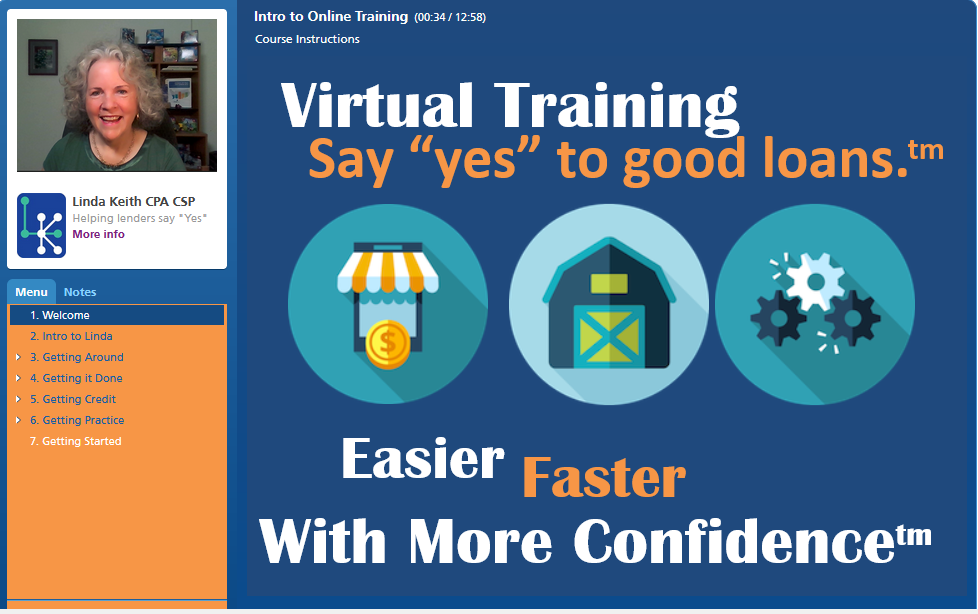I just opened up my new 2022 Forms to see what the Internal Revenue Code has been up to in modifying the forms. As I frequently say in tax return analysis training for lending and credit professionals, the IRS just does not care about you and me. More specifically, they do not care about the way we are using tax returns to determine individual, business or global cashflow available to pay debt.
Here is the good news. Very little has changed and nothing that is critical to the way we analyze 1040, 1065, 1120 and 1120S tax returns to:
- Calculate cashflow available to pay debt and/or the owners
- Spot red flags to resolve before we can say ‘yes’
- Ask good questions
- Understand the borrower and if applicable, their business
- Get beyond the numbers to apply judgement, appropriately, to the loan request
- Offer additional resources to our borrower and anticipate their needs
- Document your file so that your future self, your manager, loan review and even the regulators understand your thinking.
The Form 1040
From 2018 through 2020 there were a lot of changes. They moved income items off the page one of the 1040 and moved them to Schedule 1, which I lovingly call the closet. They just ran out of room in the living room. (Okay, maybe you have to be in class with me for that to be funny.)
That is why, in lenders online training and in onsite sessions, I came up with another way to find what you need in a 1040.
- Find Total Income on page one. This has been moving around so find those words, exactly.
- Now look above that line and account for every number. This can include wages, interest, IRAs, Pensions, Capital Gains, and anything that comes from Schedule 1
- Continue to Schedule 1 to find the missing page one items. This includes Schedule C and F, Rentals, alimony received (if taxed…it is not always), lottery and other items.
- Now that you know what you need to consider, decide which figures to use as is, which to trace to a schedule and which require questions to the borrower.
The biggest change for the 2022 IRS 1040 form is the wages line, which has much more detail on it this year. I am not sure what prompted it and have not yet decided how that might change what we do as lending and credit professionals. We have been using W-2 wages. Would you use any of the other items?
1 a Wages, salaries, tips, etc. Attach Form(s) W-2
b Household employee wages not reported on Form(s) W-2
c Tip income not reported on line 1a
d Medicaid waiver payments not reported on Form(s) W-2
e Taxable dependent care benefits from Form 2441, line 26
f Employer-provided adoption benefits from Form 8839, line 29
g Wages from Form 8919, line 6
h Other earned income
i Nontaxable combat pay election
Other than the wages line, the forms and lines we use are similar to the previous returns still in your (typical) three-year look back.
The Business Returns
As always, first you need to know who files what. Here is the run-down:
- The 1065 is filed by general partnership (GP), limited partnerships (LP) and some multi-owner Limited Liability Companies (LLC)
- The 1120 is file by corporations that have not elected S Corporation (pass-through) status and is also available to multi-owner LLCs
- The 1120S is filed by corporations whose shareholders have chosen the pass-through option and is also available to multi-owner LLCs
The forms themselves have not changed regarding the lines and schedules typically used by lenders and credit analysts to determine global cashflow. In our training, we help you determine which forms and schedules and lines to pay attention to and which are completely irrelevant for our purposes.
If you are a former trainee with Lenders Online Training, the 400+ pages of reference manuals you downloaded from class are still relevant. Depending on how long ago you attended, since we have been doing this training since 1995, you may need an updated manual because we keep adding to it.
You need more training
I know that is a bold statement, but it is likely true because of the more challenging lending and credit environment we are now in. Interest rates are not flat anymore. Individuals and businesses are being challenged by inflation. Businesses have the additional challenge of supply chain issues and a shallow pool of available labor. Even if you have been in the game for ten years, you likely have not faced what we are facing now.
We have been training lenders online and onsite for over a decade, long before the pandemic pushed other training companies online. We do both, and we do it well.

